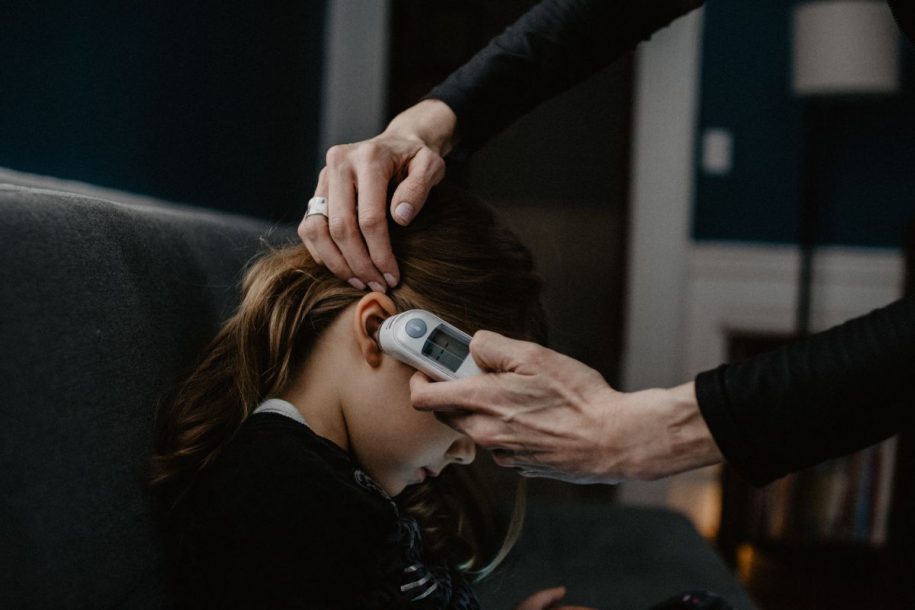By Allison Riehs | Naturopath
It’s midnight. Your little one has been restless all night.
Their temperature is rising. And you don’t know what to do.
As a parent, it’s always distressing when a child comes down with a fever or illness.
And more often than not it seems to happen at night, when doctors clinics are closed and you fear the thought of waiting in a crowded emergency room.
Reaching for a bottle of children’s paracetamol has become a common approach for responding to most mild childhood complaints, from fevers to cold and flu symptoms.
But increasingly, parents are looking for a more natural and holistic approach to treating fever in their children.
Before we continue, it’s important to emphasise a high and persistent fever can be dangerous, particularly in very young children. Not all conditions are suitable to be treated at home, and it’s important to consult with a health practitioner for any conditions you or your family might be experiencing.
But it can also be empowering to have the knowledge and natural remedies on hand to treat minor ailments at home.
The function of fever
Understanding fever can help to reduce some of the fear around it.
Normal body temperature sits at around 37 degrees Celsius.
The body temperature becomes elevated in response to infection, which is a normal immune response and actually indicates a strong and healthy immune system.
A fever is generally indicated when the temperature rises to 38 degrees, which activates immune cells to help fight viruses and infection.
The problem with paracetamol
So why not just use paracetamol when a high temperature hits?
Studies have found the use of antipyretic (fever reducing) drugs correlates to a 5 per cent increase in mortality of humans infected with influenza.
These findings were also backed by preclinical studies in rabbits which found 70 per cent of medicated animals died from infection, compared to only 16 per cent that were allowed to have their fever run its course.
This is strongly indicative of the immunoprotective function of fever, and potentially the pathogen-spreading behaviour of people who use medication to mediate symptoms and return sooner to social settings like school or work.
This is why resting at home and isolating away from others while infectious is so important.
Just sweat it out?
Parents might worry about the potential for seizures when fevers occur.
But research suggests fever-reducing medication can’t prevent febrile seizures. And febrile seizures sometimes occur even at temperatures of 38°C.
In addition to this, failure to generate a fever in response to infection is generally associated with a poorer prognosis.
So there could be benefits in closely monitoring and managing a child’s symptoms without medication.
A child will often be dry to touch and thirsty during a fever, and more likely to sweat when the fever eventually breaks.
They may experience a lack of appetite and parents often worry when children won’t eat. This is a normal reaction which allows the body to rest the digestive processes and reserve energy for fighting infection. It is however very important to keep up hydration.
When to seek help
Medical intervention is generally recommended if the temperature reaches above 38.3C in an infant, 39.4C in a child and 40C in an adult.
Seek urgent advice if your child is showing signs of dehydration, becoming non responsive, pale or floppy, showing other symptoms indicative of a serious ear or urinary infection, or you are not feeling comfortable managing the fever at home.
Natural fever suppression techniques
Hydration: The body’s metabolic rate increases by 10 to 12.5 percent for every degree above 37C, using more energy and cellular fluid. This is one of the reasons why people often lose weight rapidly when ill. Offer tepid and room temperature drinks such as water, herbal tea or coconut water to keep your child hydrated. Very cold drinks may encourage the body to work harder to heat the internal temperature. If vomiting is involved, ice chips can be used if drinking liquids feels too heavy and triggers nausea.
Skin to Skin: Skin to skin contact is documented for its thermoregulation benefits for newborn babies after birth, and it can offer those same benefits for older children too. Children naturally want to be held and comforted when they feel unwell. Keeping a young child skin to skin with a caregiver, both wrapped in a light covering, may be beneficial in regulating body temperature and heart rate.
Breastfeeding: If your infant or child is still breastfeeding, continue to breastfeed on demand, and actively encourage feeding to help them stay hydrated. Breastmilk offers antibodies and immune support which may reduce the length of illness. If breastfeeding mothers are experiencing fever or illness themselves, breastfeeding can continue, and the antibodies may even help prevent the illness spreading to the child.
Sponge bath: The American Academy of Paediatrics recommends placing a feverish child in a bath with 1 to 2 inches of tepid water, and using a sponge to cover their chest, arms and legs. Using cold water can cause shivering which makes the body temperature rise, so keep it slightly warm. Dry the child thoroughly and cover them in light clothing.
Herbal medicine: Some popular herbs for fever include elderberry, yarrow, catnip, ginger and feverfew. Herbs in tea form (served tepid or at room temperature for children) provide the dual benefits of both added hydration and plant-based medicine, making them an effective and gentle accompaniment to natural fever control. Herbal tinctures can also be kept on hand as a first aid response to childhood illnesses. Herbal medicines should only be used under the guidance of a naturopath or herbalist.
Homeopathics: There are a range of homeopathic options for both fever and the resulting symptoms of an infection or illness like irritability, listlessness, aches and pains, vomiting and nausea, and insomnia. Potential remedies include Aconite, Arsenicum album and Nux vomica. Homeopathics are personalised to the individual, so speak to your practitioner about selecting the right remedy for you or your child.
Allison Riehs is a naturopath experienced in childhood conditions and family health and wellness. Book an appointment today to discuss a personalised remedy for your family.
Disclaimer: All content on the Optimal Family Health website is created and published online for informational purposes only. It is not intended to be a substitute for professional medical advice and should not be relied on as health or personal advice. Always seek the guidance of your qualified health professional for guidance with your health or medical condition. Never disregard the advice of a medical professional, or delay in seeking it because of something you have read on this website. If you think you may have a medical emergency, call an ambulance or go to the nearest hospital emergency department.

